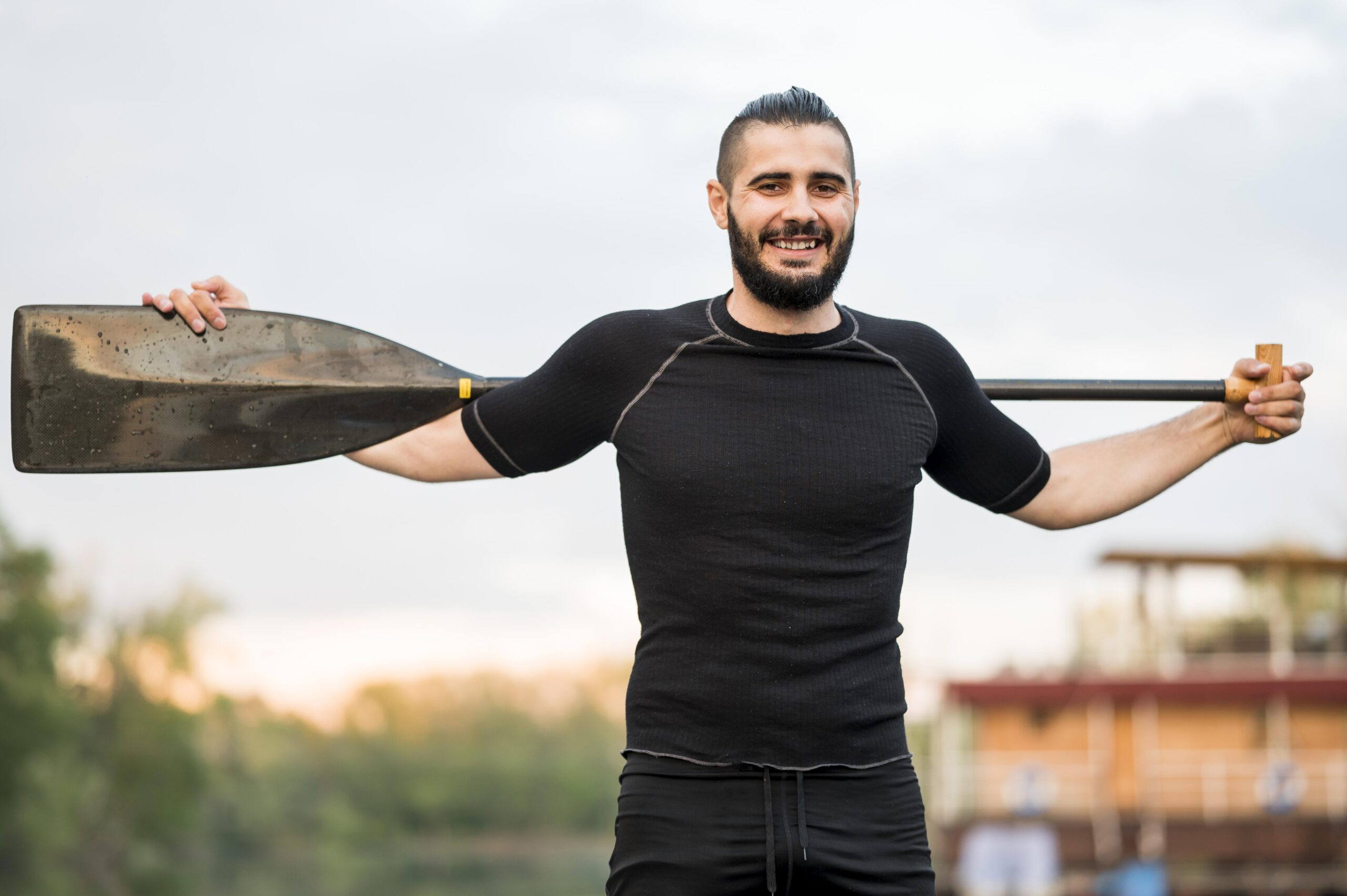
Build Stronger Shoulders and Endurance with Resistance Band Pushes
Struggling with Weak Shoulders? Want Better Upper Body Endurance?
The Alternating Push with Resistance Band is a dynamic upper-body exercise that engages multiple muscle groups, including the chest, shoulders, and triceps, while also activating the core. This movement mimics real-life pushing actions, such as opening doors or pushing objects, making it a highly functional exercise for daily activities and sports performance.
Purpose and Benefits
The Alternating Push with Resistance Band exercise offers a variety of benefits for both strength development and functional fitness. Here’s why you should consider adding it to your workout routine
- Upper Body Strength
The exercise primarily targets the pectoralis major (chest), deltoids (shoulders), and triceps. By repeatedly pushing against the resistance of the band, you strengthen these muscles, which are crucial for all pressing movements, such as pushing, lifting, and carrying objects.
- Core Engagement
As you alternate pushing with each arm, your core (abdominals, obliques, and lower back) must engage to stabilize your torso and prevent twisting. This makes it an excellent exercise for enhancing core stability, which supports better posture and balance.
- Endurance Building
This exercise is great for improving muscular endurance, as performing it over several repetitions challenges your muscles to sustain effort over time. Better endurance in the chest, shoulders, and triceps translates to improved stamina during activities that involve upper body movement.
- Unilateral Strength and Coordination
By alternating your push with each arm, this exercise allows for a unilateral workout. This helps address muscle imbalances, ensuring that both sides of your body develop strength and coordination equally, which is essential for overall functional strength and injury prevention.
- Functional Fitness
The motion of the alternating push is highly functional, meaning it mimics movements you perform in daily life and sports. Strengthening the muscles involved in these movements makes you more capable in everyday activities like pushing a heavy cart or lifting groceries, as well as in sports that require pressing motions, such as swimming, tennis, or basketball.
- Versatility and Accessibility
The use of a resistance band makes this exercise highly accessible and adaptable for people of all fitness levels. You can easily adjust the resistance by using bands of different thicknesses or changing the positioning of the band, allowing the exercise to progress as you get stronger.
Who Can Benefit from the Alternating Push with Resistance Band?
This exercise is beneficial for a wide range of individuals
- Fitness Enthusiasts: If you’re looking to build upper body strength, endurance, and improve functional fitness, this exercise is perfect for you.
- Rehabilitation Patients: Those recovering from upper body injuries, such as shoulder or elbow issues, can use this exercise to gradually rebuild strength and mobility in a controlled manner.
- Athletes: Whether you’re a swimmer, tennis player, or weightlifter, this exercise helps improve pressing strength and muscle coordination, making it a valuable addition to any sport-specific training program.
- Office Workers and Manual Laborers: Those who spend long hours typing or engaging in physical labor will benefit from this exercise by improving shoulder stability and preventing overuse injuries.
Conclusion
The Alternating Push with Resistance Band is an effective exercise for improving upper body strength, endurance, and core stability. Its ability to mimic real-world pushing movements makes it an essential exercise for functional fitness and rehabilitation. Whether you’re an athlete looking to enhance performance or an individual working to improve daily functional strength, this exercise will help you achieve your goals efficiently and safely.
By incorporating this movement into your workout routine, you can enhance muscular endurance, build strength, and improve your overall movement patterns—leading to better performance in both everyday activities and sports.
Book an appointment with us at BJM physiotherapy to have our experts guidance.
References
- Barker, R. E., & Gallant, D. J. (2009). The effectiveness of resistance bands for upper extremity rehabilitation: A systematic review. Journal of Rehabilitation Research and Development, 46(6), 761-774
- Kreiswirth, B., & McMahon, G. (2013). The effects of resistance band exercises on muscle strength and endurance in clinical populations. Physiotherapy Theory and Practice, 29(6), 477-485
- Schmitt, L., & Bodell, J. (2012). The role of resistance bands in enhancing shoulder stability and strength. Journal of Strength and Conditioning Research, 26(4), 1125-1131.
- Solis, J., & Johnson, M. (2015). Using resistance bands to improve core stability and upper body strength. Journal of Sports Rehabilitation, 24(3), 277-285.
- Bizzini, M., & Dvorak, J. (2011). Clinical effectiveness of resistance band exercises for rehabilitation. Clinical Journal of Sports Medicine, 21(3), 209-215.
Embrace mindfulness and meditation during pregnancy to boost relaxation, reduce stress, and support emotional well-being. Learn techniques designed to help you stay centered and calm throughout your pregnancy journey.
Embrace mindfulness and meditation during pregnancy to boost relaxation, reduce stress, and support emotional well-being. Learn techniques designed to help you stay centered and calm throughout your pregnancy journey.



